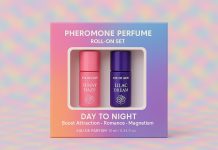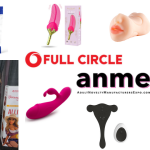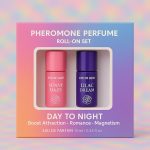(Note: This story appears in the April 2021 issue of SE Magazine)
Sunny Rodgers details the evolution of the world market and what that means for adult retail in 2021 and beyond.
*Story by Sunny Rodgers
Our industry seems to have been built on products that have their origins in China. How many times have you opened sex toy boxes to see that infamous ‘Made in China’ sticker?
This year ushers in a new decade—and a new assortment of pleasure products hailing from continents worldwide. Sexual wellness was estimated at a $9.1 billion industry in 2019 and manufacturers everywhere are clamoring for a piece of that pie.
The world’s best
When it comes to finding the best-of-the-best, there are certain countries that evoke feelings of quality and trust amongst consumers: cars from Germany, clothing from Italy, high-end make-up from France.
Modern consumers value that ‘Made in the USA’ statement, but also realize that there is a benefit with elements from other parts of the world. If nothing else, 2021 has brought ecommerce to the forefront and truly opened up the world market in ways it hasn’t been open in the past.
Top quality silicone has a long history of being produced in Germany, while Taiwan has a reputation for the best electronics, and Sweden is known for introducing new technologies to the world trade.
According to research, Germany actually ranked first in producing quality-oriented products. And although China came in last in the research results, it did rank first as far as value for money spent.
As sex toys become more omnipresent and sophisticated, components are being sourced throughout the globe in order to create entirely new pleasure creations. And they’re just getting started.
Shopping the world market
Global products not only create a melting pot of the best components, but they also allow people from almost anywhere to make their own goods.
Recently shopping the world market, I came across Fine Bone, artisans of porcelain pleasure tools handmade in the U.K. In Australia, I found Wildfire Massage Oils, infused with all-natural aphrodisiacs. Of course, Shiri Zinn has been garnering international fans, including myself, for years as she creates luxury sex toys known throughout Europe and beyond.
The art aspect that infuses each of these companies’ creations is one element that inspires others to make something beautiful, functional, and capable of supplying sexual wellness.
The global consumer
The American Psychological Association has seen the emergence of a global consumer culture over the past few decades. They cite this trend began with the food market, where many items have been global for years now, i.e., chocolate from Switzerland and coffee from South America.
Consumers have come to expect global access as a way to enjoy their favorite products all year round, especially since, for most, their pandemic lifestyles have created a smaller world for them. They crave products and experiences from the far corners of the world to make up for the lack of spontaneous activities caused by pandemic restrictions.
US manufacturers pivot
Of course, US manufacturers are pivoting in response to this global infusion of new brands and products. In addition to manufacturing more items here in America, they are also refining their niches and paying much more attention to modern sexual wellness research.
Briana Watkins, VP of Sales and Marketing for M.D. Science Lab, did a significant amount of in-depth research into forecasted trends before developing the new Desire by Swiss Navy collection.
“Business Insider reports women control 85% of consumer spending in the US, while globally, women control $36 trillion in total wealth. Many mainstream retailers are creating ‘Sexual Wellness’ sections to capitalize on consumers’ movement from need to want. Part of this change to the marketplace is due to a demographic shift and millennials exhibiting welcoming attitudes about sexual wellness and the products that provide them,” says Watkins.
Keeping an eye on what trends are on the horizon is becoming a proactive strategy with many manufacturers as more new pleasure products, both from mainstream and internationally, are introduced.
What can retailers do?
As stated by Harvard Business Review, people may love or hate transnational companies, but they can’t ignore them. They recommend companies should think about cultural terms when thinking about how consumers perceive global brands.
This means, for most retailers, the world is your oyster.
While many retailers rely on US distributors for their goods, and those distributors themselves comb the world for available products, it’s never a bad idea to keep a lookout for international manufacturers who may be able to offer something different to your customers. Offering customers internationally made products allow them to feel like citizens of the world, which is becoming increasingly important.
Many consumers want to own products from an exotic, international locale, but language and culture differences may make it difficult for them to acquire products for themselves. Being able to meet this need can set retailers apart from big box stores that all carry similar mass marketed products.
Consumers trust their regular retailers to find the best options throughout the globe. They seek retailer’s judgment and help in looking for products that not only reflect US trends such as women-owned businesses, but items that reflect global trends like sustainability.
According to studies by Research World, one of the top consumer trends for 2021 is convenience. Consumers are craving shopping journeys that allow them to shop
the world from their couch. Being able to provide this experience is where retailers can excel.
Sunny Rodgers, PhD, is the founder and CEO of Sunsplash Media Group. She can be reached at sunny@sunnyrodgers.com.













